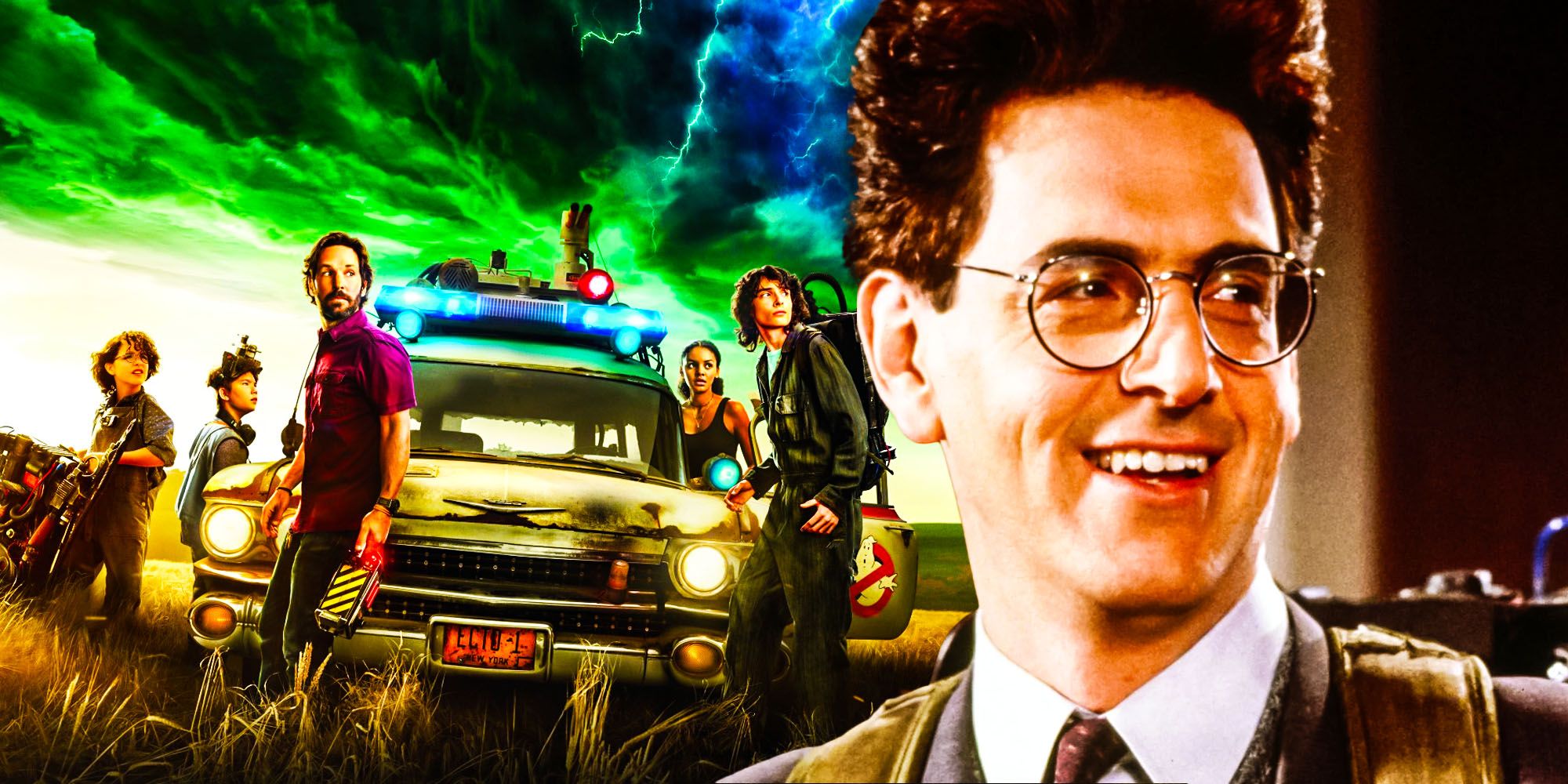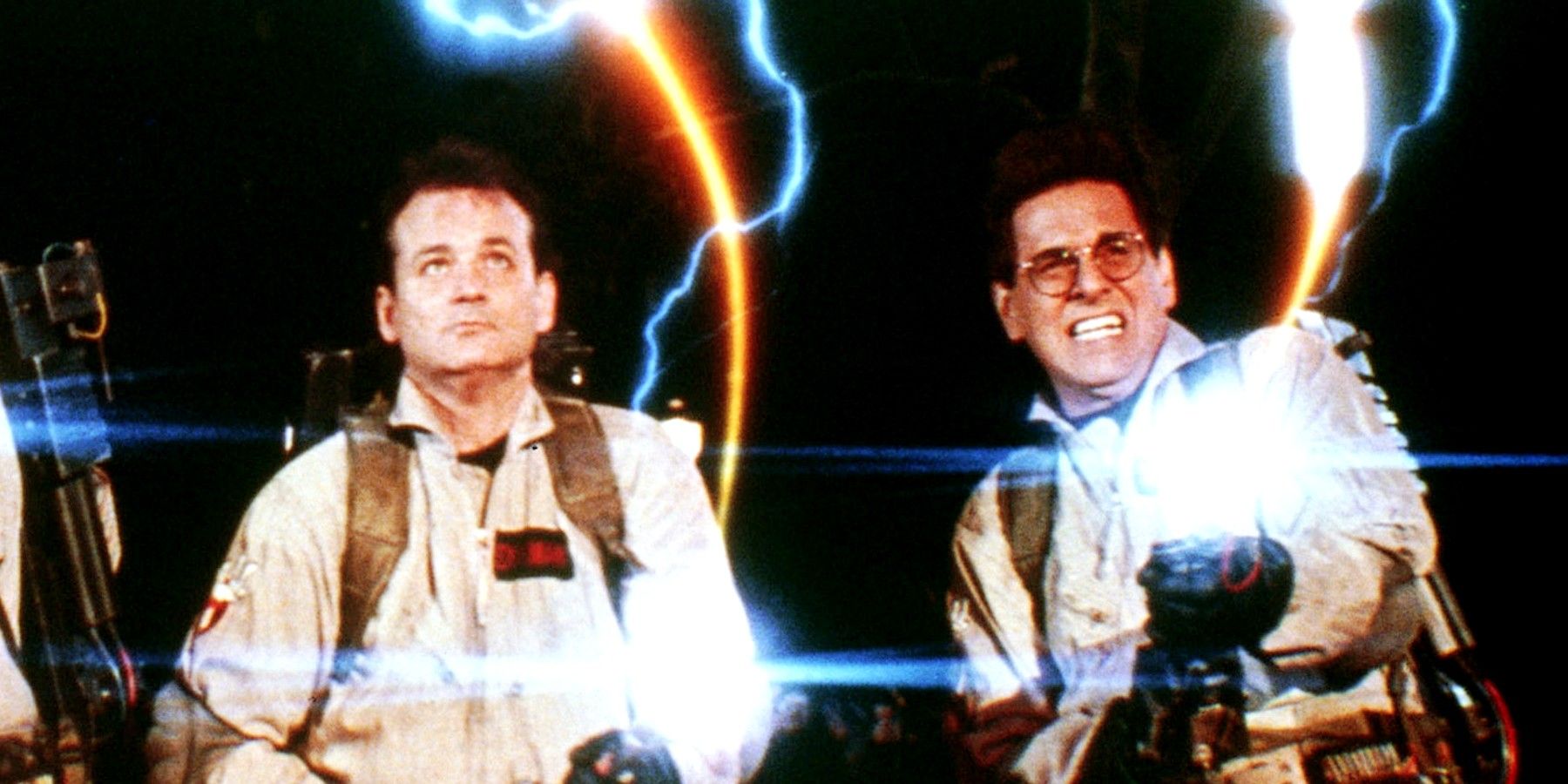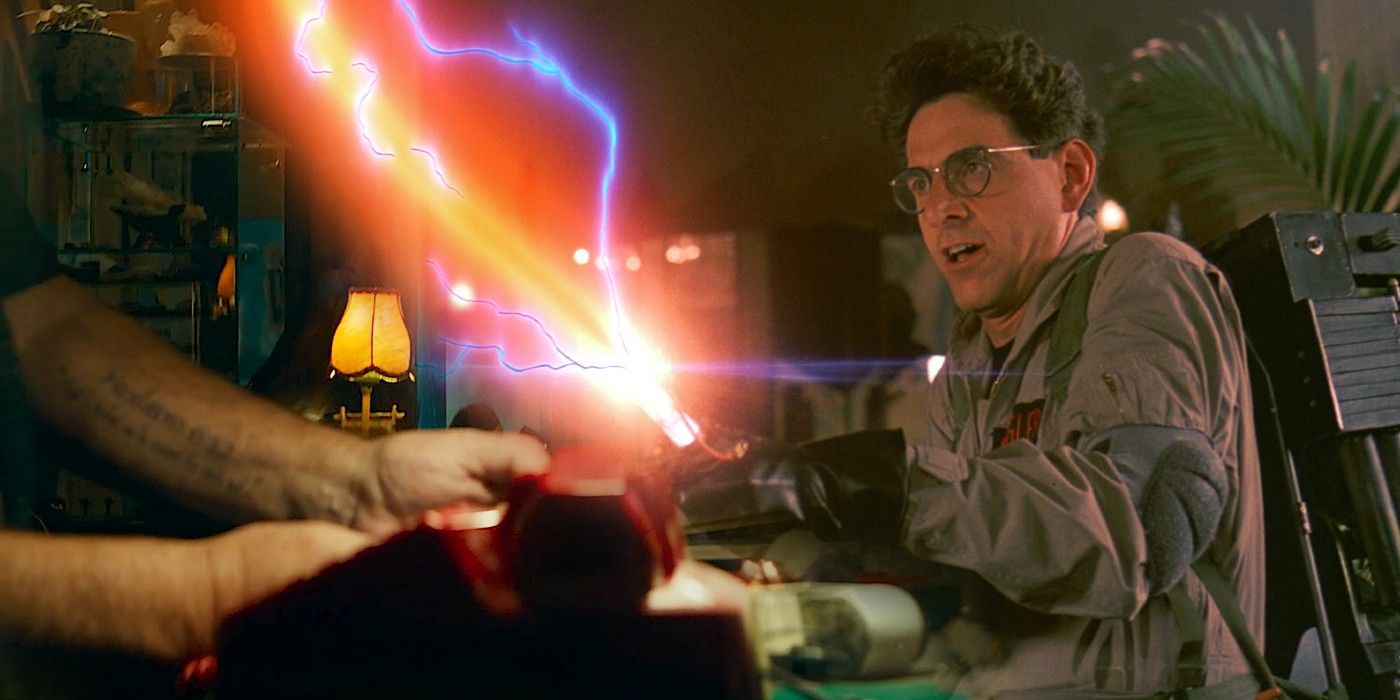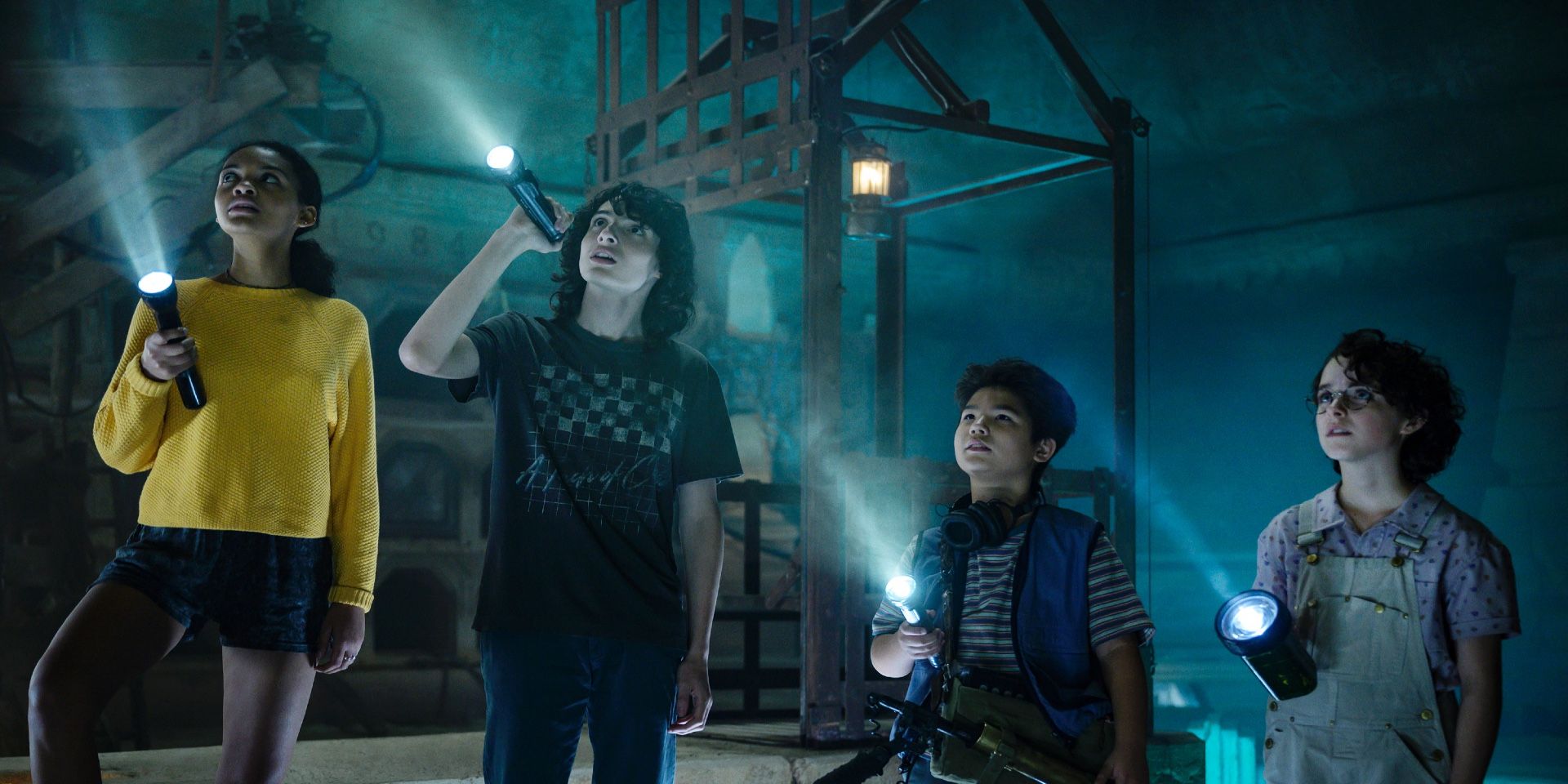
Warning: Contains SPOILERS for Ghostbusters: Afterlife.
In a fitting tribute to both its franchise history and co-creator, Ghostbusters: Afterlife brings back Egon Spengler and overtly explains why it had to happen. Following an ambitious yet flawed 2016 reboot attempt, Ghostbusters: Afterlife wholeheartedly seeks to return the Ghostbusters movie franchise to its roots. As well as reintroducing classic ghostly villains in Gozer, Slimer, and the Stay-Pufts, Ghostbusters: Afterlife also reintegrates the original Ghostbusters team into its narrative, with Dan Aykroyd, Bill Murray, Ernie Hudson, and even the late Harold Ramis eventually returning to thwart Gozer's plans.
The sequel Ghostbusters: Afterlife picks up thirty-seven years after the infamous "Manhattan Crossrip of '84," with founding Ghostbusters member Egon Spengler (a CG'd Harold Ramis) assaulted and killed by a spectral entity in his Summerville farmhouse. Callie (Carrie Coon), Egon's estranged daughter, and her two children subsequently move into the abandoned Spengler property, where they become acquainted with their family's Ghost-busting roots in time to combat the return of their patriarch's old enemy: the ancient eldritch being Gozer. With the help of their grandfather's ghost, the Spengler grandchildren manage to imprison Gozer and his apocalyptic minions within their traps before Spengler's spirit poignantly passes into the afterlife (even setting up a sequel with the Afterlife post-credits scene).
Harold Ramis' untimely death in February 2014 originally forced the Ghostbusters franchise to change tactics at the time, with a then untitled and overdue Ghostbusters 3 movie sequel repurposed by Paul Feig as a female-driven reboot. The poor reception to Ghostbusters 2016 prompted a reexamination of the franchise; however, with original Ghostbusters director Ivan Reitman's son, Jason, stepping in to produce a nostalgia-driven sequel to the original two Ghostbusters movies. Ghostbusters: Afterlife, therefore, is packed with callbacks and references to the original Ghostbusters movies, with the most poignant being the film's "For Harold" tribute that includes two posthumous appearances from Ramis. Here's how Ghostbusters: Afterlife brought back Egon and why it had to happen.

In Ghostbusters: Afterlife, Harold Ramis' Egon Spengler is first seen attempting to outrun and trap Gozer in the opening sequence before ultimately being killed by an insidious mist that prompts his heart to fail. Although it is clear that the older man in the scene is undoubtedly Spengler, the character's face is permanently obscured, allowing the Ghostbusters: Afterlife effects team to use a body double (Oliver Cooper) and some neat makeup work to recreate the legendary Ramis on-screen. Ghostbusters: Afterlife then revels in the assumption that this opening scene may be the extent of Spengler's appearance, only for the final battle in the film to see the original Ghostbusters appear to battle Gozer before Spengler's ghost materializes to help his granddaughter Phoebe (McKenna Grace) banish the entity once and for all.
Whereas Spengler's first appearance is the stuff of smoke and mirrors, Egon's contribution in the penultimate scene of Ghostbusters: Afterlife is undoubtedly powered by Harold Ramis' likeness. Ghostbusters: Afterlife revives Ramis for its climactic battle via archival clips and photos taken from the original two films, showcasing the very best that cutting-edge CG has to offer in 2021. These clips are layered over a body double to create a likeness to Ramis physically before the Egon image stills are then tweaked based on photos from the 1984 and 1989 Ghostbusters installments to sharpen his distinct features.

The posthumous CG used by Ghostbusters: Afterlife is undoubtedly one of the towering successes of Jason Reitman's film. Not only is Egon Spengler's ghost in the film an almost perfect replication of Ramis' physical features, but Ghostbusters: Afterlife also handles (and explains) the return of a deceased actor's character with the utmost care and sensitivity. Spengler doesn't speak at any point in the film, with Reitman instead allowing other characters to deliver his final message before Egon disappears into the ether.
This decision to keep Egon's ghost silent and allow his mere presence to impact the film's narrative ensures Ghostbusters: Afterlife retains the emotional impact Ramis' return should have. Far too many modern productions opt to have their CG'd stars speak, such as in The Rise of Skywalker, which utilized limited sound archives to create cohesive dialogue for Princess Leia (the late Carrie Fisher). However, the result was jarring interactions between the CG'd Leia and the new crop of Star Wars characters that felt shoe-horned into the film for the sake of Fisher's memory. Ghostbusters: Afterlife circumvents these issues by keeping Egon silent, and therefore allowing his memory (and subsequent emotional credits-scene tribute) to say more than the 1984 Ghostbusters sound archives ever could.

The return of Egon's ghost sews up several story threads for Ghostbusters: Afterlife while also creating a wholly fitting tribute for the late Harold Ramis. The decision to scrap the original Ghostbusters 3 plans following Ramis' death always appeared ill-conceived by Sony, with the resulting Ghostbusters 2016 reboot considered a commercial flop as it attempted to rewrite so much of the classic Ghostbusters canon. Jason Reitman and the returning Ghostbusters stars from the 1980s clearly understand the 2016 film's shortcomings, with Ghostbusters: Afterlife instead laden with nostalgic callbacks and Easter eggs for Ghostbusters fans to enjoy.
More significant, however, is how Ghostbusters: Afterlife poignantly makes Egon's ghostly appearance the zenith of the film's action. Egon quite literally appears from and returns to the afterlife, which points to the reasoning behind the film's final name as he saves his family from destruction. Egon's return also delivers a heartfelt tribute to Harold Ramis, whose original 1984 co-stars were all convinced to return to a new Ghostbusters project after reading Gil Kenan and Reitman's nostalgia-driven script. This undercurrent of emotion is evident at the end of Ghostbusters: Afterlife as the camera pans up towards the sky before the screen fades to black and the words "For Harold" appear on the left-hand side of the screen.
Using Egon's ghost as the final building block for Gozer's (an uncredited Olivia Wilde) defeat also essentially hands the Ghostbusters franchise back to its fans following the uproar regarding the 2016 reboot. Ramis and Aykroyd's original 1984 Ghostbusters still commands a substantial following to this day, with Ghostbusters 2016 removing all of the Ramis-inspired elements that Ghostbusters is fundamentally built upon. In this way, the Egon ghost is the perfect finale to Ghostbusters: Afterlife as it successfully celebrates Harold Ramis' genius, the continuation of the Spengler legacy, and the reintegration of the original Ghostbusters team into the franchise all in one fell swoop.
from ScreenRant - Feed https://ift.tt/32cuEzW






0 Comments
Please don't use vulgar comments and avoid discussion on Religious matters